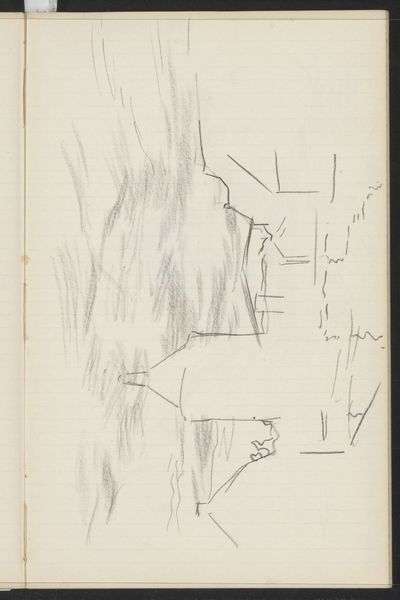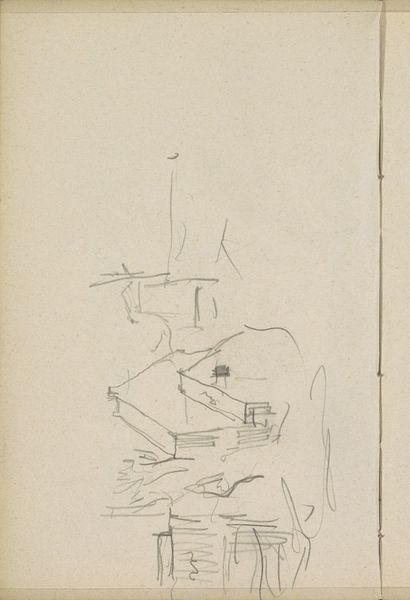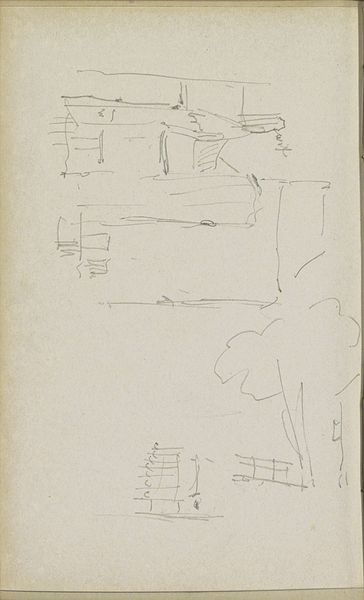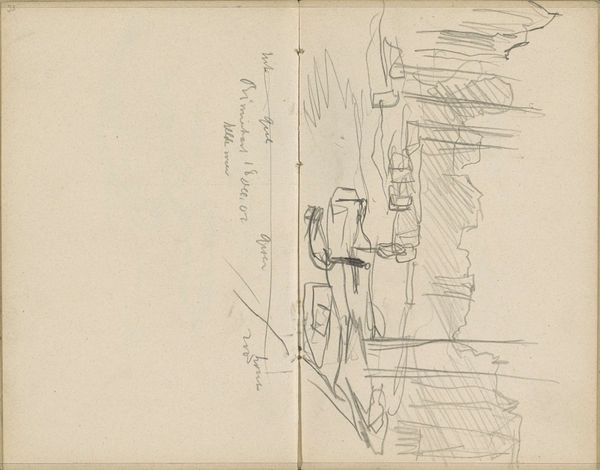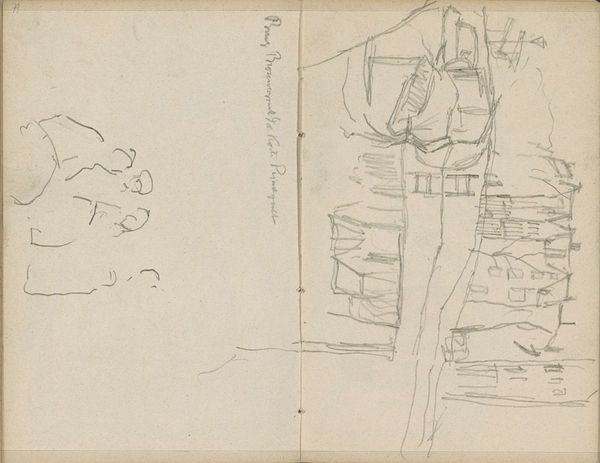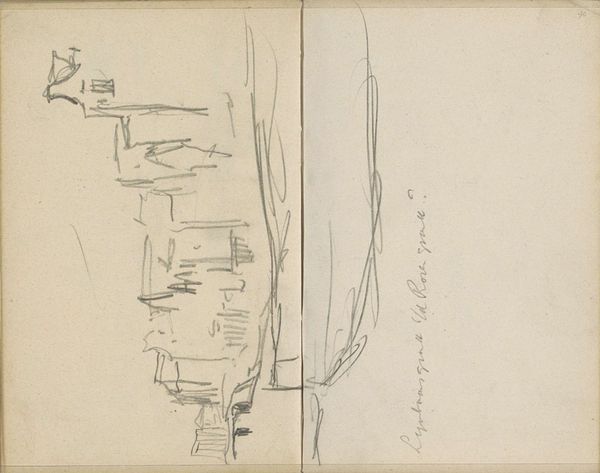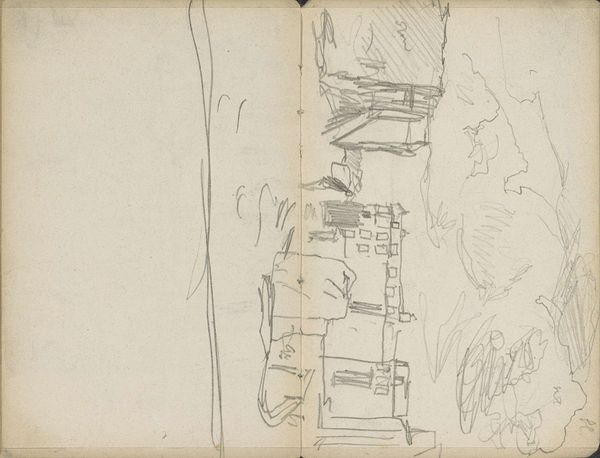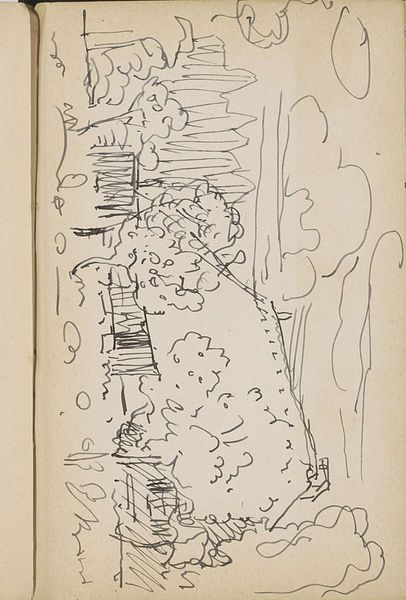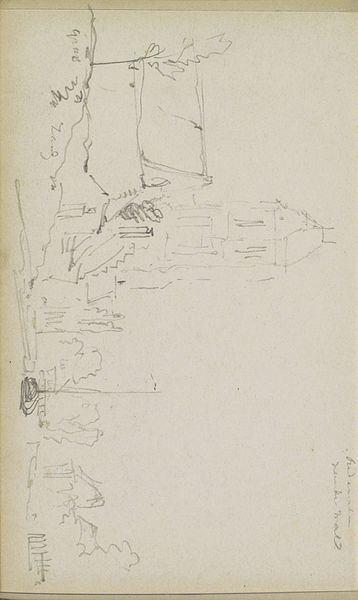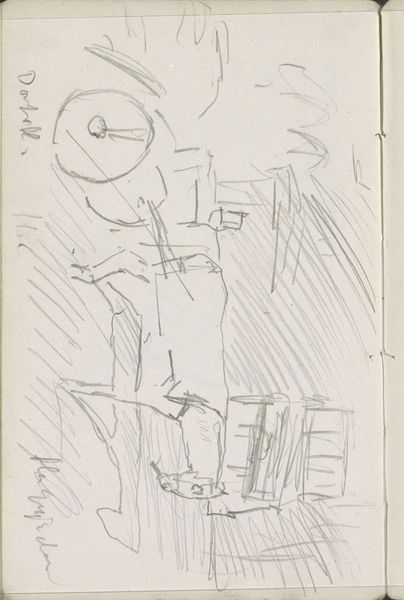
Gezicht op huizen en de Drommedaris, de stadspoort van Enkhuizen, aan de Oude Haven 1900 - 1931
0:00
0:00
willembastiaantholen
Rijksmuseum
Copyright: Rijks Museum: Open Domain
Editor: So, this is Willem Bastiaan Tholen’s "Gezicht op huizen en de Drommedaris, de stadspoort van Enkhuizen, aan de Oude Haven," made sometime between 1900 and 1931. It’s a pencil drawing, housed here at the Rijksmuseum. I’m immediately struck by the sketch-like quality of it. It feels very immediate and raw. What aspects of its composition jump out at you? Curator: The dominance of line is certainly significant. Observe how Tholen employs it not merely to define form, but also to suggest light and shadow through variations in pressure and density. Consider the linear structure; how does the interplay of vertical and oblique strokes create a sense of depth and spatial recession? Editor: It’s interesting you mention depth, because despite being a cityscape, there’s a flatness to it. The perspective seems almost… compressed? Curator: Precisely. The flattening effect is achieved through the selective use of perspective, prioritizing a graphic articulation of form over a strict adherence to realistic spatial representation. To what extent do you believe the inherent qualities of pencil contribute to this effect, considering its limited tonal range and textural capabilities? Editor: I suppose the lack of color flattens it. I do like how the medium accentuates the sketchiness, as it emphasizes the basic geometric forms within the urban environment. This evokes a certain austerity. I never would have thought about it that way, thanks. Curator: Indeed, by analyzing the intrinsic qualities of the work, we arrive at a more profound understanding of the artist’s intention. Through these stylistic devices, Tholen presents us not just with a cityscape, but with a commentary on the essential geometric forms which shape our built environment.
Comments
No comments
Be the first to comment and join the conversation on the ultimate creative platform.
